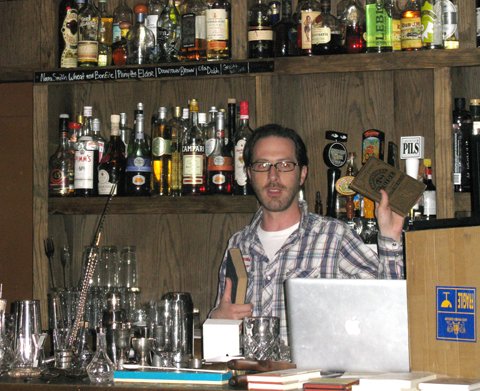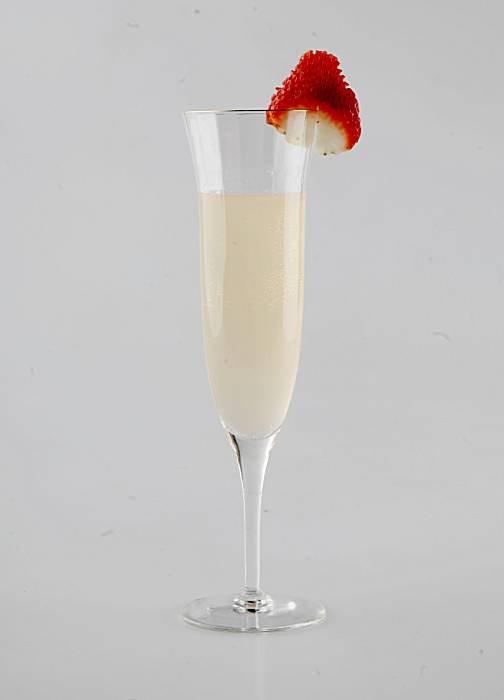On Monday April 5th, Greg Boehm of Cocktail Kingdom and Don Lee of Momofuko Ssam Bar gave a talk at Rickhouse in San Francisco.
Boehm's plane was delayed so Lee gave an impromptu talk on one of his bar science projects. (When I last spoke with him, he was measuring the BRIX count of sugar syrup in all the bars in New York.) Recently he's been trying to determine how much is a "dash" of bitters in a drink.
Lee noted that different bottles of bitters release different amounts of liquid in a dash; not only just between brands but also between different-sized bottles of the same brand, and within one bottle when it is very full or very empty. (I currently have a jumbo sized Angostura bottle and the darn thing spits out a dash before I can tip it over far enough to get it in the glass.)
As a starting point of his experiment, he measured the average size dash (in weight) from the middle 80% of a ten-ounce Angostura bottle, a Regan's Orange Bitters bottle, and Angostura in a Japanese dasher bottle. He found that Angostura released a smaller amount on average than Regan's. He also found that the 90 ml Japanese bitters dasher bottle delivered extremely consistent results (but only 1/4 of the size of a Regan's dash), probably because the long neck allowed for a consistent launching distance for the liquid.
Future experiments might include testing how sensitive the palate is to these minute differences in dash size, so that we'll know how much difference a dash makes.
When Greg Boehm arrived he was mostly playing show-and-tell with his vintage barware. Boehm collects functional barware, imports barware from Japan and other countries to sell, and is now beginning to make recreations of vintage barware when nothing as good is being made today. I learned a few things:
- Patents on cocktail shakers seem to start around 1880
- Brazil and Argentina are the only two countries that use uniquely-shaped shakers; Brazil's with a built-in strainer that seems pretty handy until you start bashing it with large Kold-Draft ice cubes and Argentina's a conical shaker that's really hard to separate.
- All of those fancy-shaped shakers (penguins, bells, zeppelins) were launched at the end of Prohibition in the 1930's
- Japanese barspoons are not really meant for measuring, but for stirring and pulling out a drop of liquid from the glass. I noticed this in Japanese bars in Singapore- that instead of the bartender tasting the drink using a straw, they taste it by putting a drop of the drink on the back of their hand then licking it off.
- The reason many barspoons (like this one) have the flat end is that they're based on apothecary spoons that were used to crush pills.

